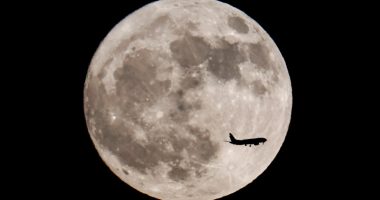
Now feels like the time to clarify: I am not anti-light. When I say I love the dark, what I mean is: watching the trees move in the candlelight beams of the moon, seeing the clouds shape-shift around the stars, catching a vignette of lightning bugs sparking in the folds of summer’s dusk. To appreciate the dark is to love light in its most wild and unfiltered form. It’s an opportunity to see things, just in a different way.
I also recognize that what I see as an irritant, others see as a form of safety. (Although it’s worth noting that various studies fail to show a correlation between lower crime and more lights, and in fact, many experts I spoke with said that over-lighting gives criminals dark spaces to operate in. An always-on light is less of an alert than, say, a motion light that signals the arrival of a new presence.) I recognize that what makes me moony about not having outdoor lighting, others see as a hazard. Including my own mom. Once, when visiting me, she tripped as she went out to get something out of her car. I have heard about how I need to install outdoor lighting ever since. It’s really about being “dark-sky friendly, which doesn’t mean dark ground,” Ms. Foott rightly pointed out to me.
It is with this in mind that I finally built up the courage to talk to one of my closest neighbors. I knocked, they didn’t answer, and to be honest, I have yet to knock again. My fellow dark-sky acolytes at IDA suggested writing a letter, making sure I’m clear in that I’m not asking my neighbor to take down their light, but simply redirect it to the ground. Most of the time, every single expert I spoke to reminded me, a neighbor isn’t even aware that there’s an issue.
There is a reason that conversations like this feel hard: It can seem nit-picky, tricky to reach a consensus on how much light is too much. (In reality, it is not. Dark-sky friendly lighting should be pointed downward, shielded, warm in color, the lowest light level possible, and serve a clear purpose.)
But while noise, messy yards, and other ilk that rile up homeowner’s associations, are recognized as problems, we don’t see light in the same way. An example: If a neighbor had an incessantly barking dog or was throwing nightly ragers, we would never tell the person on the receiving end of all those decibels to install better insulation. But the onus to solve the problem of light pollution is often placed on the aggrieved party to install blackout curtains, draw the shades, calm down.
Source: | This article originally belongs to Nytimes.com









